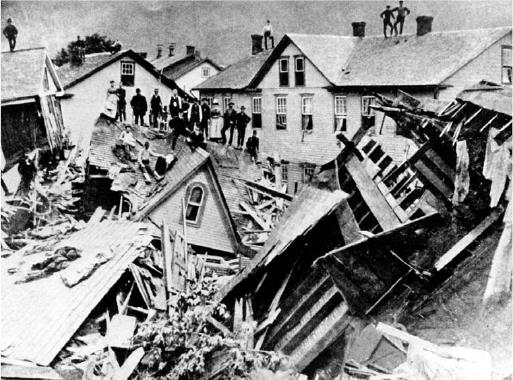Natural and Man-Made DisastersFloods |
How does the Great Flood of 1993 compare with other floods? |
The flood, which occurred in the summer of 1993, was immense: So much of Iowa was under water that a satellite image (monitoring moisture on the earth) made the flooded area look like it was the size of Lake Michigan or Lake Superior. The area that was under water was roughly equivalent to twice the size of Massachusetts. Even so, the Great Flood resulted in a smaller water-covered area than did floods earlier in the century (in 1926 and 1973).
Due to heavy rainfall during the spring and summer of 1993, the Mississippi River widened to as much as seven miles at some points, and the Missouri River also overflowed its banks—despite the levee system that had been put in place by the federal government earlier in the century. The flood took 50 lives, displaced 85,000 people from their homes, destroyed 8,000 homes, damaged the contents of another 20,000 homes, stranded 2,000 loaded barges, and resulted in just more than 400 counties being declared disaster areas. The property and crop losses totaled $15 billion.

